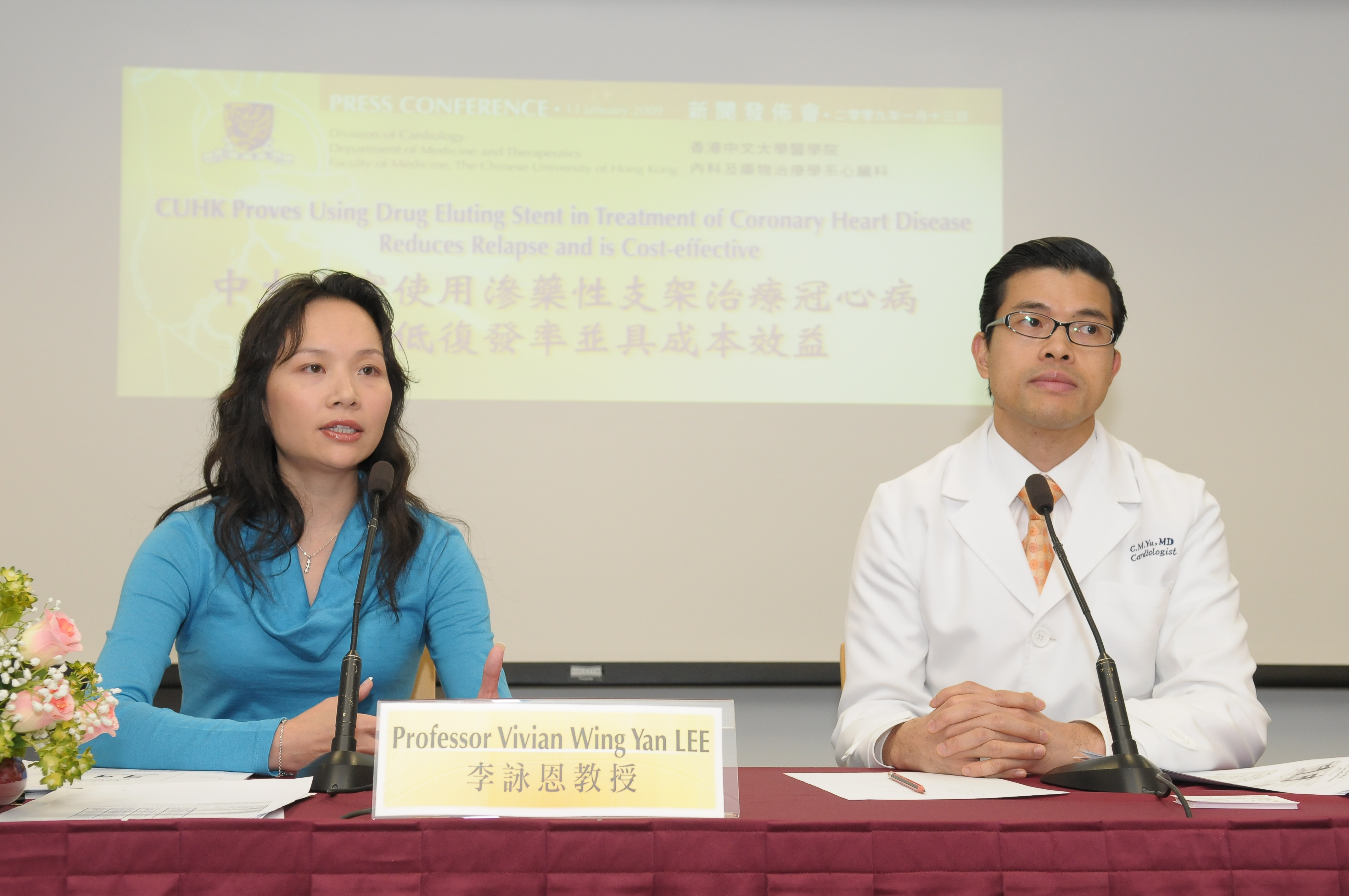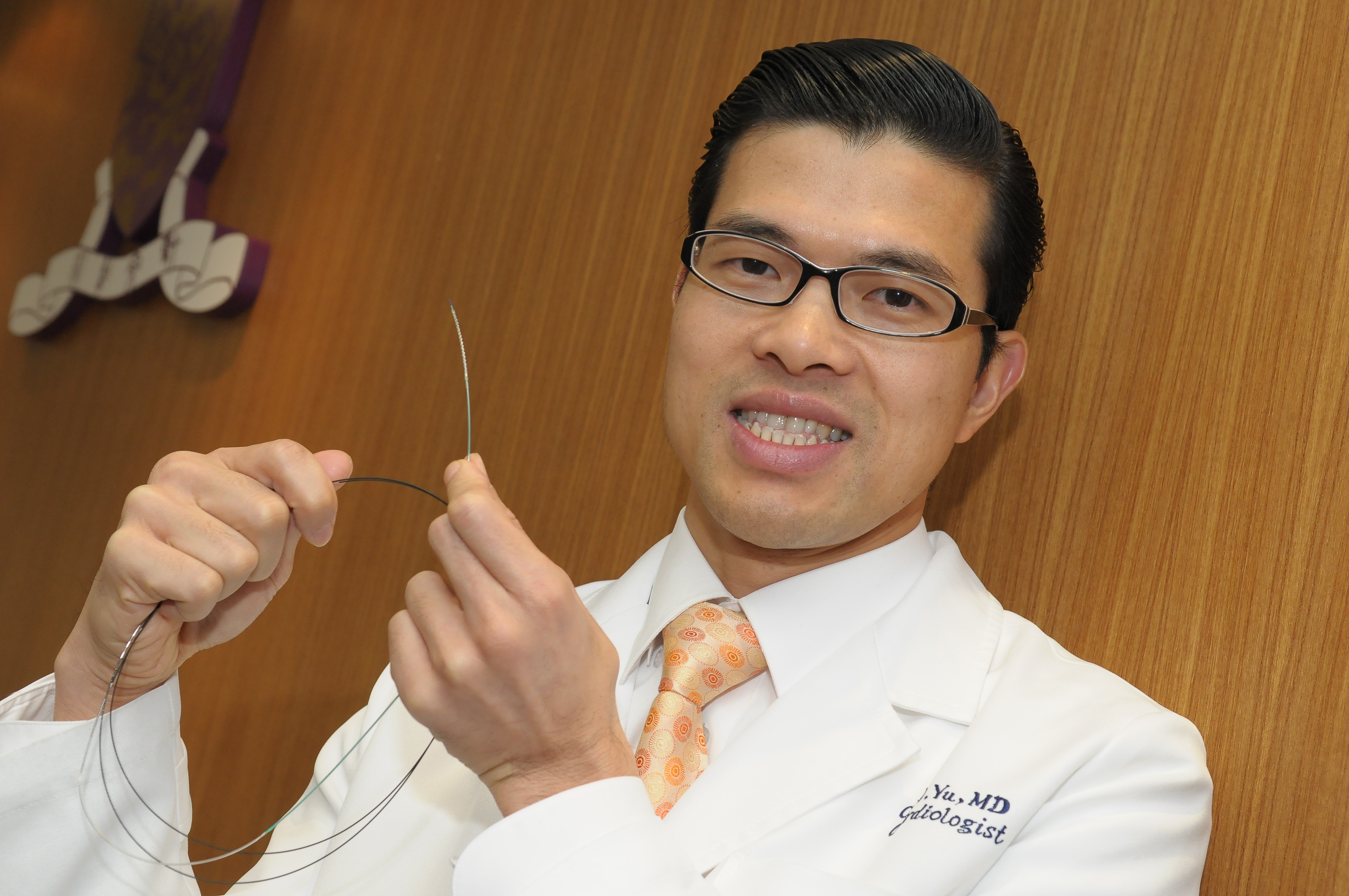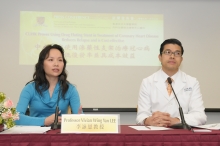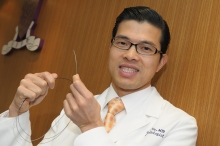CUHK
News Centre
CUHK Proves Using Drug-eluting Stent in Treatment of Coronary Heart Disease Reduces Relapse and is Cost-effective
Coronary heart disease (CHD) is a major health problem worldwide, and has been the second leading cause of death in Hong Kong since 1960s. CHD is caused by the narrowing of arteries that supply blood to the heart (called coronary arteries) which will result in angina and even heart attack. Currently the main treatment includes the use of drugs and catheter-based dilatation of the narrowed coronary artery, known as percutaneous coronary intervention (PCI).
In Hong Kong, over 5,000 PCI procedures are performed yearly. The procedure involves the inflation of balloon to open up the narrowed coronary artery followed by stent placement. Traditionally bare metal stents (BMS) were used during PCI. In the last few years, a new stent platform, called drug-eluting stents (DES), were increasingly used aiming at reducing the recurrence of coronary artery narrowing. However, whether the use of DES is cost-effective in public hospitals in Hong Kong remains controversial. The Hong Kong government only provides subsidy for the use of BMS for patients with financial difficulty. At present, there is no data comparing the treatment efficacy and cost-effectiveness of the two types of stents in Chinese population.
The Division of Cardiology of the Department of Medicine and Therapeutics, School of Pharmacy and Institute of Vascular Medicine at The Chinese University of Hong Kong conducted a study led by Professor Cheuk-man Yu and Professor Vivian Wing-yan Lee to compare treatment outcome and evaluate the cost-effectiveness of BMS and DES placements in CHD patients. Between January and December 2005, 558 patients who had undergone PCI at the Prince of Wales Hospital were studied and followed for one year. Among them, 300 (54%) patients received DES and 258 (46%) patients received BMS. The study observed that after one year, patients received DES had a remarkably lower mortality of 0.3% than patients received BMS (4.7%). Moreover, the need for revascularization is significantly lower in patients with DES (1.7%) when compared with patients with BMS (5%). Although the mean procedural cost for PCI was higher for using DES (HK$46,913) than BMS (HK$31,991), the costs of index hospitalization, follow up and repeated PCI were higher in patients with BMS which offset the extra procedural cost. As a result, the overall cost difference in one year was only HK$2,749 in excess in patients who received DES.
Therefore, our study demonstrated for the first time that the use of DES in the public hospital setting in Hong Kong is highly cost-effective. It not only reduces the need for repeated PCI procedure in the next 12 months, but also the mortality rate. Therefore, we suggest that for those underprivileged patients who need PCI for management of CHD, the government should consider covering the cost of not only BMS, but also DES.
Professor Cheuk-man Yu, Head of Division of Cardiology, Professor of Medicine and Therapeutics (right) and Professor Vivian Wing-yan Lee, Assistant Professor, School of Pharmacy, CUHK







